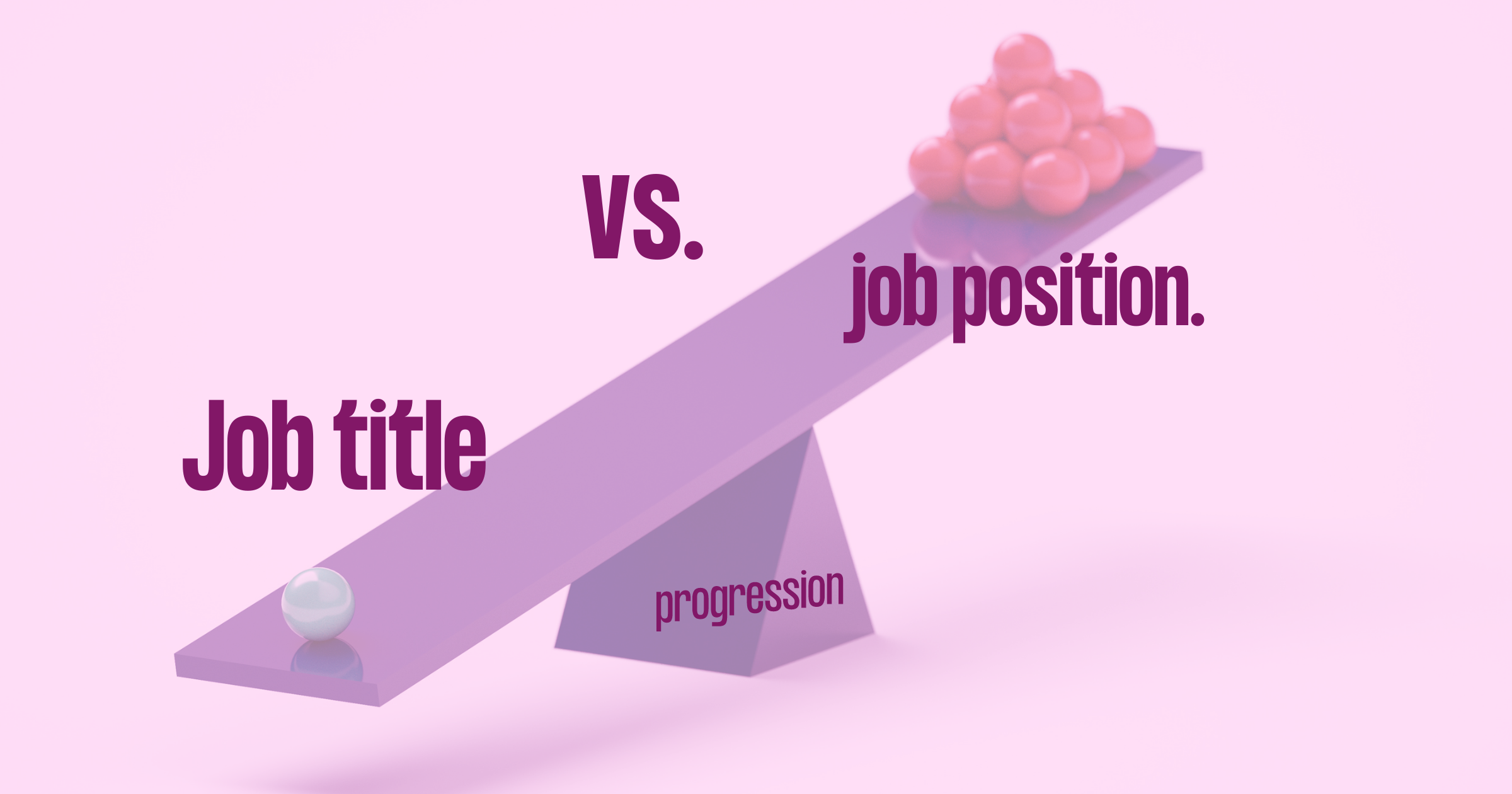Job title. Job position. What’s the difference between the two?
At the end of the day, does it really matter what title or position you hold?
Some people would argue that we put too much emphasis on titles and positions. Knowing the difference won’t put money in your bank account, and it’s better to just do your job well without fussing about the details. Others would say that it’s necessary, and even useful, to know the difference.
We agree with the latter camp. While some people are not interested in career progression, many — 76%, according to one study — want career growth opportunities. In most cases, your job title and position will play a role in your career advancement. Knowing the difference between the two, and how each affects your work, will help you achieve said advancement.
What’s more, knowing the difference between your title and position will allow you to better understand where you stand in your company with regard to your responsibilities and team members.
In this article, we’ll go over the differences between a job title and a job position, as well as how both contribute to your professional journey.
What is a job title?
A job title is a label or designation that provides a brief overview of a job. Job titles help companies structure their organisations; they allow companies to categorise the different positions within an organisation, according to each employee’s experience level and duties. Put simply, companies use job titles to classify employees and make it clear who is in charge of what.
A lot of job titles reflect what an individual does in their job. For example, titles like Chef, Accountant, and Supervisor are simple and self-explanatory. Other titles show both job duties and seniority level, for instance, Marketing Director, Senior Project Manager, VP of Engineering, and Head Chef.
All these titles are more traditional, however. The modern-day workforce, particularly the startup world, has come with some creative and trendy job titles: Chief of Happiness, Director of First Impressions, VP of Miscellaneous Stuff, Chief Vibes Officer… — the list is endless.
When it comes to career growth, job titles help with describing a career path. For example, most companies will have a job title hierarchy that typically starts from entry-level titles all the way up to C-level titles.
Nonetheless, while a job title may give you an idea of your responsibilities, it’s not the most detailed description of what you do. This is where your job position comes in.
What is a job position?
A job position is a description of your day-to-day responsibilities and specific tasks in a company. Companies often hire for multiple job positions, all sharing the same job title. This is because each employee who holds that title will assume different responsibilities.
Unlike a job title, your job position is often not revealed to you all at once; you figure it out over time as you become more familiar with your daily work and gain a deeper understanding of the scope of your role.
Your job position may even change as you gain more responsibilities. But a change in job position doesn’t necessarily mean a title change. For instance, you may get more responsibilities after getting a raise, even if there’s no title change.
While a job title is more about establishing a high-level hierarchical structure, a job position is more about what you’re required to do to pull your weight in the company.
Job title and job position: Where the two meet your professional journey
Since job titles are more about your place in the hierarchical structure of the company, they’re closely linked with the kind of value your company, the job market, and society, in general, place on you. Usually, the more superior your job title (think CEO, CFO, Director, General Manager), the more you’re respected both internally and outside your organisation.
In terms of career growth, a job title can impact your career’s future. Some people may see a title as a mere description of your position, but a title change can indicate your commitment to learning and growing in your field. This is something many managers take seriously when considering someone’s career progression and promotion.
A position, on the other hand, helps people see your expertise and the selection of responsibilities you carry out in a company. A beneficial job position capitalises on your strengths while presenting plenty of challenges that help you grow professionally. Overall, the better your position, the more competent you become.
The job title and job position concepts regularly overlap and feed into each other, it’s just that one of them (title) highlights your spot in the company, while the other (position) is more focused on your skill and competence levels. Ultimately, both will play a role in shaping your professional journey.
Using your job title and position to grow your career
Understanding the difference between a job title and a job position helps you better define and assess your role in a company. This way, you can set career goals that allow you to make the most of your professional journey, and help you progress in your career.
Speaking of career progression, having the right tools to support your professional growth and development is a great way to advance your career without any hassles.
Progression is a platform that allows you to track and measure your career growth — you’ll have all the information you need to map out a clear career advancement pathway in one place.
Learn more about Progression →





